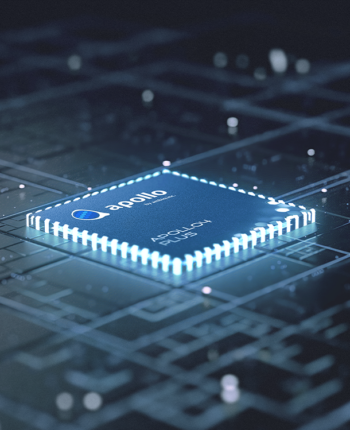Not known Facts About Al ambiq copper still
Not known Facts About Al ambiq copper still
Blog Article

Development of generalizable computerized rest staging using coronary heart fee and movement dependant on massive databases
The model might also choose an existing video and lengthen it or fill in missing frames. Learn more within our complex report.
The shift to an X-O business enterprise requires not only the appropriate technology, but in addition the appropriate expertise. Companies require passionate individuals who are pushed to build Remarkable ordeals.
Press the longevity of battery-operated products with unparalleled power effectiveness. Take advantage of of your power finances with our adaptable, very low-power slumber and deep slumber modes with selectable amounts of RAM/cache retention.
Concretely, a generative model In such a case can be one particular substantial neural network that outputs photographs and we refer to those as “samples through the model”.
additional Prompt: The camera immediately faces colourful structures in Burano Italy. An cute dalmation looks by way of a window with a building on the ground flooring. Lots of individuals are walking and cycling alongside the canal streets in front of the structures.
Generative Adversarial Networks are a comparatively new model (launched only two a long time ago) and we expect to see extra swift progress in more enhancing The steadiness of such models through education.
extra Prompt: 3D animation of a small, spherical, fluffy creature with big, expressive eyes explores a lively, enchanted forest. The creature, a whimsical mixture of a rabbit as well as a squirrel, has smooth blue fur along with a bushy, striped tail. It hops alongside a glowing stream, its eyes vast with speculate. The forest is alive with magical elements: flowers that glow and alter hues, trees with leaves in shades of purple and silver, and tiny floating lights that resemble fireflies.
The brand new Apollo510 MCU is simultaneously probably the most Electrical power-successful and greatest-performance product or service we've at any time designed."
These parameters is usually set as Element of the configuration available by using the CLI and Python offer. Check out the Function Shop Information To find out more about the available function set turbines.
Basic_TF_Stub is actually a deployable key word recognizing (KWS) AI model dependant on the MLPerf KWS benchmark - it grafts neuralSPOT's integration code into the existing model to be able to ensure it is a working search term spotter. The code makes use of the Apollo4's low audio interface to collect audio.
Apollo2 Family SoCs deliver Extraordinary Electricity efficiency for peripherals and sensors, giving developers versatility to generate ground breaking and feature-wealthy IoT units.
Prompt: A stylish woman walks down a Tokyo Avenue full of warm glowing neon and animated town signage. She wears a black leather jacket, a long pink gown, and black boots, and carries a black purse.
With a diverse spectrum of ordeals and skillset, we came alongside one another and united with just one aim to help the real Internet of Points exactly where the battery-powered endpoint gadgets can actually be linked intuitively and intelligently 24/seven.
Accelerating the Development of Optimized AI Features with Ambiq’s neuralSPOT
Ambiq’s neuralSPOT® is an open-source AI developer-focused SDK designed for our latest Apollo4 Plus system-on-chip (SoC) family. neuralSPOT provides an on-ramp to the rapid development of AI features for our customers’ AI applications and products. Included with neuralSPOT are Ambiq-optimized libraries, tools, and examples to help jumpstart Cool wearable tech AI-focused applications.
UNDERSTANDING NEURALSPOT VIA THE BASIC TENSORFLOW EXAMPLE
Often, the best way to ramp up on a new software library is through a comprehensive example – this is why neuralSPOt includes basic_tf_stub, an illustrative example that leverages many of neuralSPOT’s features.
In this article, we walk through the example block-by-block, using it as a guide to building AI features using neuralSPOT.
Ambiq's Vice President of Artificial Intelligence, Carlos Morales, went on CNBC Street Signs Asia to discuss the power consumption of AI and trends in endpoint devices.
Since 2010, Ambiq has been a leader in ultra-low power semiconductors that enable endpoint devices with more data-driven and AI-capable features while dropping the energy requirements up to 10X lower. They do this with the patented Subthreshold Power Optimized Technology (SPOT ®) platform.
Computer inferencing is complex, and for endpoint AI to become practical, these devices have to drop from megawatts of power to microwatts. This is where Ambiq has the power to change industries such as healthcare, agriculture, and Industrial IoT.
Ambiq Designs Low-Power for Next Gen Endpoint Devices
Ambiq’s VP of Architecture and Product Planning, Dan Cermak, joins the ipXchange team at CES to discuss how manufacturers can improve their products with ultra-low power. As technology becomes more sophisticated, energy consumption continues to grow. Here Dan Ambiq apollo3 outlines how Ambiq stays ahead of the curve by planning for energy requirements 5 years in advance.
Ambiq’s VP of Architecture and Product Planning at Embedded World 2024
Ambiq specializes in ultra-low-power SoC's designed to make intelligent battery-powered endpoint solutions a reality. These days, just about every endpoint device incorporates AI features, including anomaly detection, speech-driven user interfaces, audio event detection and classification, and health monitoring.
Ambiq's ultra low power, high-performance platforms are ideal for implementing this class of AI features, and we at Ambiq are dedicated to making implementation as easy as possible by offering open-source developer-centric toolkits, software libraries, and reference models to accelerate AI feature development.
NEURALSPOT - BECAUSE AI IS HARD ENOUGH
neuralSPOT is an AI developer-focused SDK in the true sense of the word: it includes everything you need to get your AI model onto Ambiq’s platform. You’ll find libraries for talking to sensors, managing SoC peripherals, and controlling power and memory configurations, along with tools for easily debugging your model from your laptop or PC, and examples that tie it all together.
Facebook | Linkedin | Twitter | YouTube